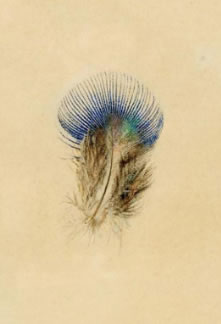The Arts Society South West London Monthly Lectures
Simon Seligman celebrates the life of the visionary Victorian John Ruskin

On Monday 11 February Simon Seligman will give a lecture celebrating the life of the visionary Victorian John Ruskin, who, as writer, teacher, artist, collector, patron and critic, was perhaps the most complete polymath of the 19th century.

Concern about the negative impacts of C19th industrialisation led to him founding the Guild of St George (1871), a charity for arts, crafts and the rural economy. He donated a collection of art, books and minerals for public display and education in Sheffield.
Simon Seligman studied art and architectural history at Warwick University, and the Attingham Summer school. From 1991 until 2010 he worked at Chatsworth, in a variety of roles, latterly as Head of Communications. Has lectured about Chatsworth, the Devonshire Collection and associated topics, throughout the UK and on several US tours (including the Metropolitan Museum and the National Gallery of Art). Publications include written or edited guidebooks and articles for and about Chatsworth.
Looking ahead:
11 FEBRUARY
FROM VENICE TO SHEFFIELD – JOHN RUSKIN’S PASSION FOR ARTS, CRAFT AND SOCIAL JUSTICE
Lecturer: Simon Seligman
A lecture celebrating the life of the visionary Victorian John Ruskin, who, as writer, teacher, artist, collector, patron and critic, was perhaps the most complete polymath of the 19th century. Concern about the negative impacts of C19th industrialisation led to him founding the Guild of St George (1871), a charity for arts, crafts and the rural economy. He donated a collection of art, books and minerals for public display and education in Sheffield.
11 MARCH
THE ASTONISHING MASTER MOZART COMES TO LONDON
Lecturer: Graham Griffiths
This entertaining and informative presentation tells of the Mozart family’s residence in London (1764-5) when the child prodigy Wolfgang Amadeus befriended George III, became the object of medical research, and composed his first symphony. Dr Griffiths illustrates his talk at the piano with performances of Mozart’s witty and precociously mature compositions. Music by Mozart’s own child-prodigy Franz Xaver brings the presentation to an emotional conclusion.
13 MAY
VILLAS IN ROMAN BRITAIN; THE ART & ARCHITECTURE OF A REMOTE ROMAN PROVINCE & THEIR ORIGINS
Lecturer: Guy de la Bédoyère
Over a thousand Roman villas are known in Britain. They range from modestly appointed farmhouses to country palaces, with a ‘golden age’ in the 4th century AD. The richest owners used architectural styles, wall paintings, mosaics, sculpture and luxury goods to advertise their status and to display their learning and taste. This lecture explains how villas developed in Roman Britain and their fate, with a special focus on Lullingstone.
10 JUNE
PHILIP WEBB’S FIRST AND LAST HOUSES: RED HOUSE AND STANDEN
Lecturer: Shawn Kholucy
Collaboratively designed with their friends, William & Janey Morris’ Red House led to the Arts and Crafts movement. Morris & Co. grew from it. Morris became an international force; a poet, writer and philosopher. He and Webb were social reformers. They crystallised the way we regard and care for old buildings. Three decades later, Webb’s last house, Standen, celebrates the journey they made. Looking at both houses illuminates this journey.
8 JULY
PUNISHING STATUES; THE FATE OF POPULAR SCULPTURE IN REVOLUTIONS
Lecturer: Tom Flynn
Why are statues of public figures punished for the crimes committed by the figures they represent during revolutions and civil uprisings? Statues of famous people should resemble their subject in order to facilitate recognition. Yet, the likeness must not be so accurate that the statue could be mistaken for its subject. Curiously, it is this very likeness that engenders public rage in moments of political upheaval or revolution.
9 SEPTEMBER
A DECORATIVE ART; THE HISTORY OF WALLPAPERS
Lecturer: Joanna Banham
This lecture explores the history and development of wallpaper and their uses in both grand and more ordinary homes, from earliest times up to the present day. It discusses the changing ways it was made from the first black and white patterns, the creation of elegant flock hangings, Chinese hand-painted papers, machine-printing, the designs of Morris and the Arts and Crafts Movement, to Modernist and Contemporary designs in the 20th century.
14 OCTOBER
MAD MEN AND ARTISTS; HOW THE ADVERTISING INDUSTRY EXPLOITED FINE ART
Lecturer: Tony Rawlins
Tony Rawlins describes the processes by which advertisements are created and why, from the Renaissance through to the present day, fine works of art have helped enhance brand imagery for advertisers. In an amusing and informative lecture, visuals and videos show the original works, the creative process and the (not always entirely successful!) advertisements that result.
11 NOVEMBER
WOMEN ARTISTS OF THE SECOND WORLD WAR
Lecturer:Magdalen Evans
Many women were amongst the British artists officially commissioned to record the Second World War both at home and abroad. She will introduce us to some new names based on interviews with several of the self-effacing but very talented people who found their paintings shown unexpectedly at the empty National Gallery, as well as provide fresh context to some of the better-known paintings which enhance our national collections.
9 DECEMBER
THE MAGIC OF PANTOMIME
Lecturer: Ian Gledhill
Pantomime is an enduring and peculiarly British institution, and developed into the form we know today in the nineteenth century. However, its beginnings were much longer ago and far away. This talk looks at the origins and sources of panto and the rise of its many traditions and superstitions, interspersed with personal anecdotes from the speaker’s years of working (and appearing) in pantomime.
Venue: Dryburgh Hall, Putney Leisure Centre. Monday evenings at 8pm.
Guests welcome £7 per head. Students £3 each.
January 24, 2019
Related links
|